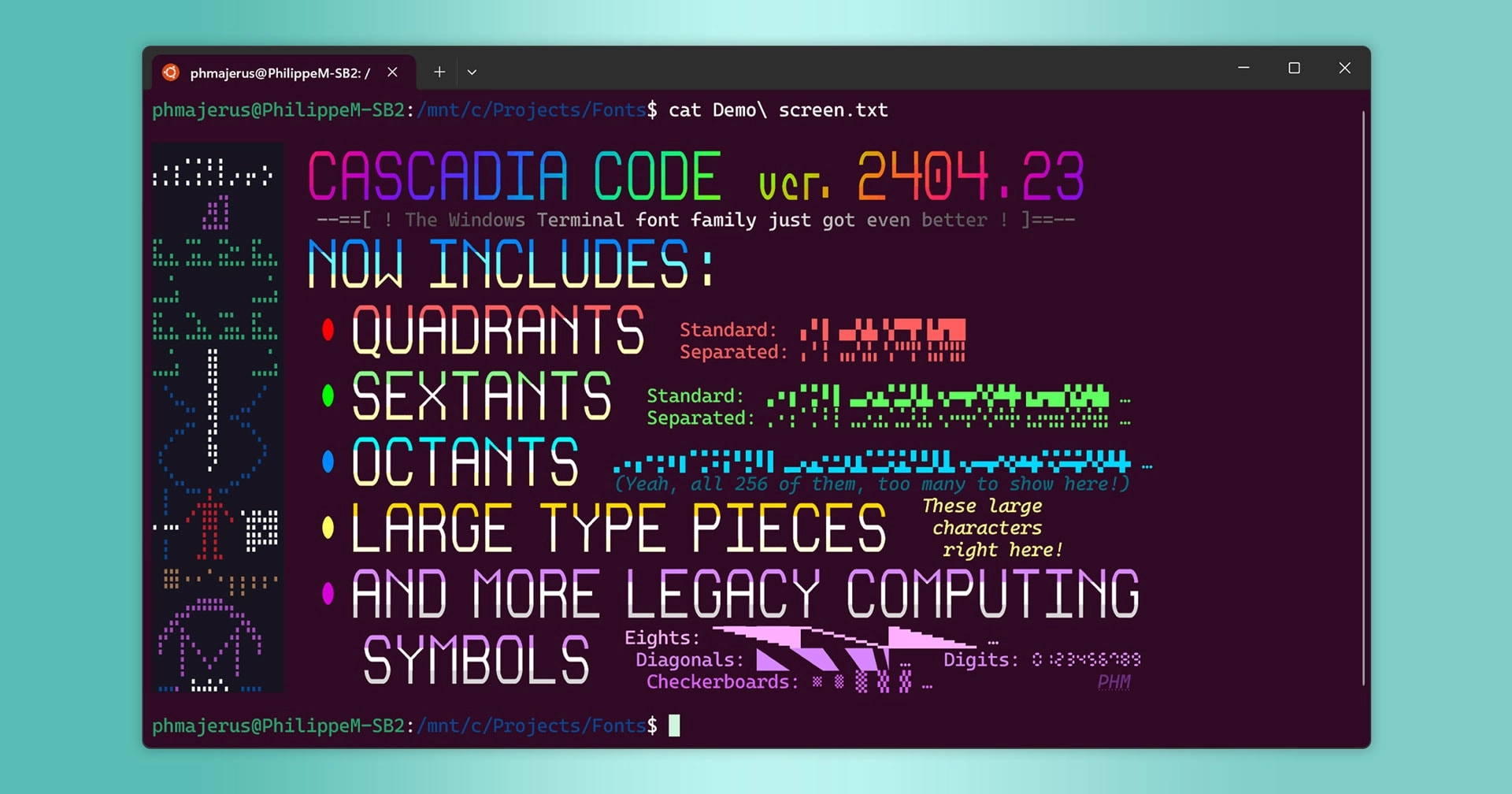Cascadia Code is an open-source monospaced font produced by Microsoft first released in 2020. It is the default typeface for the official Windows Terminal app.
Like Intel’s One Mono, JetBrains’ Mono and IBM’s Plex, Cascadia Code is a clean, legible, modern monospaced font specifically designed for terminal and code editing. It also offers a wide range of programming ligatures.
Recently, the font received its first update in almost three years. According to the release announcement, it’s a significant one.
If you’re a fan of this font and have an older version installed, or if you’re simply a creative individual interested in ASCII and ANSI art, there’s a lot in this version to grab your attention…
Cascadia Code Now Retro Terminal Friendly
Cascadia Code 2404.03 introduces 1140 new glyphs, including a glut of legacy computing symbols like sextants, octants, eights, sedecimants, quadrants (separated), segmented digits, circles and checkerboard, and large type pieces (per Unicode 16.0 spec).
Heard of Nerd Fonts? It’s a project that patches more icons, symbols, and glyphs into developer-focused fonts. Those glyphs can be used to both prettify and enhance the kinds of visual information relayed through coding and command-line environments.
But you won’t need to use a 3rd-party patched version of Cascadia Code as Nerd Font variants ship as part of this release: Cascadia Code NF and Cascadia Mono NF. Both versions offer the full range of (metrics-compatible) Nerd Font glyphs as of April 2024.
You’ll notice in the screenshot above that Microsoft chose to demo the updated font using Ubuntu for WSL running in the Windows Terminal app — nice touch!
If you have an older version of Cascadia Code installed Microsoft recommend removing/uninstalling it before replacing it with a new version to avoid “improper rendering”.
• Download Cascadia Code on Github
